Powder Spreading Mechanism in Laser Powder Bed Fusion Additive Manufacturing: Experiments and Computational Approach Using Discrete Element Method
Abstract
:1. Introduction
2. Methodology
2.1. DEM Model
2.2. Experimental Methods
3. Results and Discussion
3.1. Initial Powder Configuration and Pileup at Spreader
3.2. Powder Bed
3.2.1. Mean Particle Size and Powder Size Distribution along Spreading Direction
3.2.2. Powder Particle Packing Density
3.2.3. Effects of Spreader Velocity on Powder Particle Packing Density
4. Summary and Conclusions
- The results of the simulation modeling and experimental methodologies for powder particle size distribution were nearly equal. Powder particle sizes were evenly dispersed in both procedures. At the same particle size range, the maximum volume fraction of the particles was likewise found to be the same. Powder particle size distribution was identical across all layers in the simulation.
- Along the longitudinal direction of the construct plate, the porosity of the particles in the spread layers decreases. The powder that is deposited at the start of the build plate is largely made up of smaller particles that are not evenly distributed. In addition, the powder particle packing density in the top deposited layers is higher than in the lower layers. Furthermore, particle density is more uniform across the entire build plate in the top layers than in the lower layers.
- At the end of the build plate, the maximum average density of all dispersed powder layers was found to be around 47%. In the top layer, the highest average packing density for the entire spreading direction was determined to be roughly 55%, which is consistent with the experimental finding.
- With increasing spreader velocity, the powder packing density of the distributed powder drops. The spreader does not have enough time to evenly distribute powder on the build plate at higher speeds. In addition, the fine powder particles were disseminated initially by the spreader at a lesser velocity. Lower spreader velocity enhances the particle packing density of the powder bed in AM due to these considerations. Reduced table displacement raises packing density up to a certain point. When this range exceeds the size range of the maximum particle volume, the packing density drops along with the table displacement. Furthermore, as the spreader deposits more large particles in the powder bed, an increase in table displacement increases the void fraction of the powder bed.
Author Contributions
Funding
Institutional Review Board Statement
Informed Consent Statement
Data Availability Statement
Acknowledgments
Conflicts of Interest
References
- Leal, R.; Barreiros, F.M.; Alves, L.; Romeiro, F.; Vasco, J.C.; Santos, M.; Marto, C. Additive manufacturing tooling for the automotive industry. Int. J. Adv. Manuf. Technol. 2017, 92, 1671–1676. [Google Scholar]
- Kumar, G.R.; Sathishkumar, M.; Vignesh, M.; Manikandan, M.; Rajyalakshmi, G.; Ramanujam, R.; Arivazhagan, N. Metal additive manufacturing of commercial aerospace components—A comprehensive review. Proc. Inst. Mech. Eng. Part E J. Process Mech. Eng. 2022, 237, 441–454. [Google Scholar] [CrossRef]
- Najmon, J.C.; Raeisi, S.; Tovar, A. Review of additive manufacturing technologies and applications in the aerospace industry. In Additive Manufacturing for the Aerospace Industry; Elsevier: Amsterdam, The Netherlands, 2019; pp. 7–31. [Google Scholar]
- Vignesh, M.; Kumar, G.R.; Sathishkumar, M.; Manikandan, M.; Rajyalakshmi, G.; Ramanujam, R.; Arivazhagan, N. Development of Biomedical Implants through Additive Manufacturing: A Review. J. Mater. Eng. Perform. 2021, 30, 4735–4744. [Google Scholar] [CrossRef]
- Ali, M.H.; Sabyrov, N.; Shehab, E. Powder bed fusion–laser melting (PBF–LM) process: Latest review of materials, process parameter optimization, application, and up-to-date innovative technologies. Prog. Addit. Manuf. 2022, 7, 1395–1422. [Google Scholar]
- Sun, Y.; Hebert, R.J.; Aindow, M. Effect of laser scan length on the microstructure of additively manufactured 17-4PH stainless steel thin-walled parts. Addit. Manuf. 2020, 35, 101302. [Google Scholar] [CrossRef]
- Young, Z.; Qu, M.; Coday, M.M.; Guo, Q.; Hojjatzadeh, S.M.H.; Escano, L.I.; Fezzaa, K.; Chen, L. Effects of Particle Size Distribution with Efficient Packing on Powder Flowability and Selective Laser Melting Process. Materials 2022, 15, 705. [Google Scholar] [CrossRef]
- Mindt, H.W.; Megahed, M.; Lavery, N.P.; Holmes, M.A.; Brown, S.G.R. Powder Bed Layer Characteristics: The Overseen First-Order Process Input. Metall. Mater. Trans. A Phys. Metall. Mater. Sci. 2016, 47, 3811–3822. [Google Scholar]
- Mazur, M.; Selvakannan, P. Laser Powder Bed Fusion Principles, Challenges, and Opportunities. In Additive Manufacturing for Chemical Sciences and Engineering; Bhargava, S.K., Ramakrishna, S., Brandt, M., Selvakannan, P., Eds.; Springer: Singapore, 2022; pp. 77–109. [Google Scholar]
- Weaver, J.S.; Whiting, J.; Tondare, V.; Beauchamp, C.; Peltz, M.; Tarr, J.; Phan, T.Q.; Donmez, M.A. The effects of particle size distribution on the rheological properties of the powder and the mechanical properties of additively manufactured 17-4 PH stainless steel. Addit. Manuf. 2021, 39, 101851. [Google Scholar] [CrossRef]
- Sagar, V.R.; Lorin, S.; Göhl, J.; Quist, J.; Jareteg, K.; Cromvik, C.; Mark, A.; Edelvik, F.; Wärmefjord, K.; Söderberg, R. A Simulation Study on the Effect of Particle Size Distribution on the Printed Geometry in Selective Laser Melting. J. Manuf. Sci. Eng. 2022, 144, 051006. [Google Scholar] [CrossRef]
- Spurek, M.A.; Haferkamp, L.; Weiss, C.; Spierings, A.B.; Schleifenbaum, J.H.; Wegener, K. Influence of the particle size distribution of monomodal 316L powder on its flowability and processability in powder bed fusion. Prog. Addit. Manuf. 2021, 7, 533–542. [Google Scholar] [CrossRef]
- Tan, J.H.; Wong, W.L.E.; Dalgarno, K.W. An overview of powder granulometry on feedstock and part performance in the selective laser melting process. Addit. Manuf. 2017, 18, 228–255. [Google Scholar] [CrossRef] [Green Version]
- Murakami, Y. Additive manufacturing: Effects of defects. In Metal Fatigue: Effects of Small Defects and Nonmetallic Inclusions; Elsevier: Amsterdam, The Netherlands, 2019; pp. 453–483. [Google Scholar]
- Pérez-Ruiz, J.D.; de Lacalle, L.N.L.; Urbikain, G.; Pereira, O.; Martínez, S.; Bris, J. On the relationship between cutting forces and anisotropy features in the milling of LPBF Inconel 718 for near net shape parts. Int. J. Mach. Tools Manuf. 2021, 170, 103801. [Google Scholar]
- Cundall, P.A.; Strack, O.D.L. A discrete numerical model for granular assemblies. Géotechnique 1979, 29, 47–65. [Google Scholar] [CrossRef]
- Nan, W.; Ghadiri, M. Numerical simulation of powder flow during spreading in additive manufacturing. Powder Technol. 2018, 342, 801–807. [Google Scholar] [CrossRef]
- Haeri, S.; Wang, Y.; Ghita, O.; Sun, J. Discrete element simulation and experimental study of powder spreading process in additive manufacturing. Powder Technol. 2017, 306, 45–54. [Google Scholar] [CrossRef] [Green Version]
- Mussatto, A.; Groarke, R.; O’Neill, A.; Obeidi, M.A.; Delaure, Y.; Brabazon, D. Influences of powder morphology and spreading parameters on the powder bed topography uniformity in powder bed fusion metal additive manufacturing. Addit. Manuf. 2020, 38, 101807. [Google Scholar] [CrossRef]
- Haeri, S. Optmisation of blade type spreaders for powder bed preparation in Additive Manufacturing using DEM simulations. Powder Technol. 2017, 321, 94–104. [Google Scholar]
- Holmes, M.A. A numerical Simulation of Particilate Distribution of the Blast Furnace Raw Material Burden through Paul Worth Bell-Less Top Apparatus. Ph.D. Thesis, Swansea University, Swansea, UK, 2016. [Google Scholar]
- Luding, S. Introduction to discrete element methods. Eur. J. Environ. Civ. Eng. 2008, 12, 785–826. [Google Scholar]
- Jacob, G.; Donmez, A.; Slotwinski, J.; Moylan, S. Measurement of powder bed density in powder bed fusion additive manufacturing processes. Meas. Sci. Technol. 2016, 27, 115601. [Google Scholar] [CrossRef] [Green Version]
- Hogg, R. Mixing and segregation in powders: Evaluation, mechanisms and processes. KONA Powder Part. J. 2009, 27, 3–17. [Google Scholar] [CrossRef] [Green Version]
- Chen, H.; Wei, Q.; Zhang, Y.; Chen, F.; Shi, Y.; Yan, W. Powder-spreading mechanisms in powder-bed-based additive manufacturing: Experiments and computational modeling. Acta Mater. 2019, 179, 158–171. [Google Scholar] [CrossRef]
- Xiang, Z.; Zhang, M.; Yan, R.; Yin, Q.; Zhang, K. Powder-spreading dynamics and packing quality improvement for laser powder bed fusion additive manufacturing. Powder Technol. 2021, 389, 278–291. [Google Scholar] [CrossRef]
- Yim, S.; Bian, H.; Aoyagi, K.; Yamanaka, K.; Chiba, A. Spreading behavior of Ti48Al2Cr2Nb powders in powder bed fusion additive manufacturing process: Experimental and discrete element method study. Addit. Manuf. 2021, 49, 102489. [Google Scholar] [CrossRef]
- Sehhat, M.H.; Mahdianikhotbesara, A. Powder spreading in laser-powder bed fusion process. Granul. Matter 2021, 23, 89. [Google Scholar] [CrossRef]
- Mandloi, K.; Amrapurkar, P.; Cherukuri, H.P. Discrete Element Modeling of Scraping Process and Quantification of Powder Bed Quality for SLM. In Proceedings of the ASME 2020 15th International Manufacturing Science and Engineering Conference, MSEC 2020, Online, 3 September 2020. [Google Scholar]
- Joint FAA—EASA Workshop on Qualification/Certification of Additively Manufactured Parts. Available online: https://www.faa.gov/sites/faa.gov/files/2022_FAA_EASA_AM_Workshop_Full_Proceedings.pdf (accessed on 14 January 2023).
- Snow, Z.; Martukanitz, R.; Joshi, S. On the development of powder spreadability metrics and feedstock requirements for powder bed fusion additive manufacturing. Addit. Manuf. 2019, 28, 78–86. [Google Scholar] [CrossRef]
- Le, T.-P.; Wang, X.; Davidson, K.P.; Fronda, J.E.; Seita, M. Experimental analysis of powder layer quality as a function of feedstock and recoating strategies. Addit. Manuf. 2021, 39, 101890. [Google Scholar] [CrossRef]
- Lee, Y.; Simunovic, S.; Gurnon, K.A. Quantification of Powder Spreading Process for Metal Additive Manufacturing; Oak Ridge National Laboratory: Oak Ridge, TN, USA, 2019. [Google Scholar] [CrossRef]
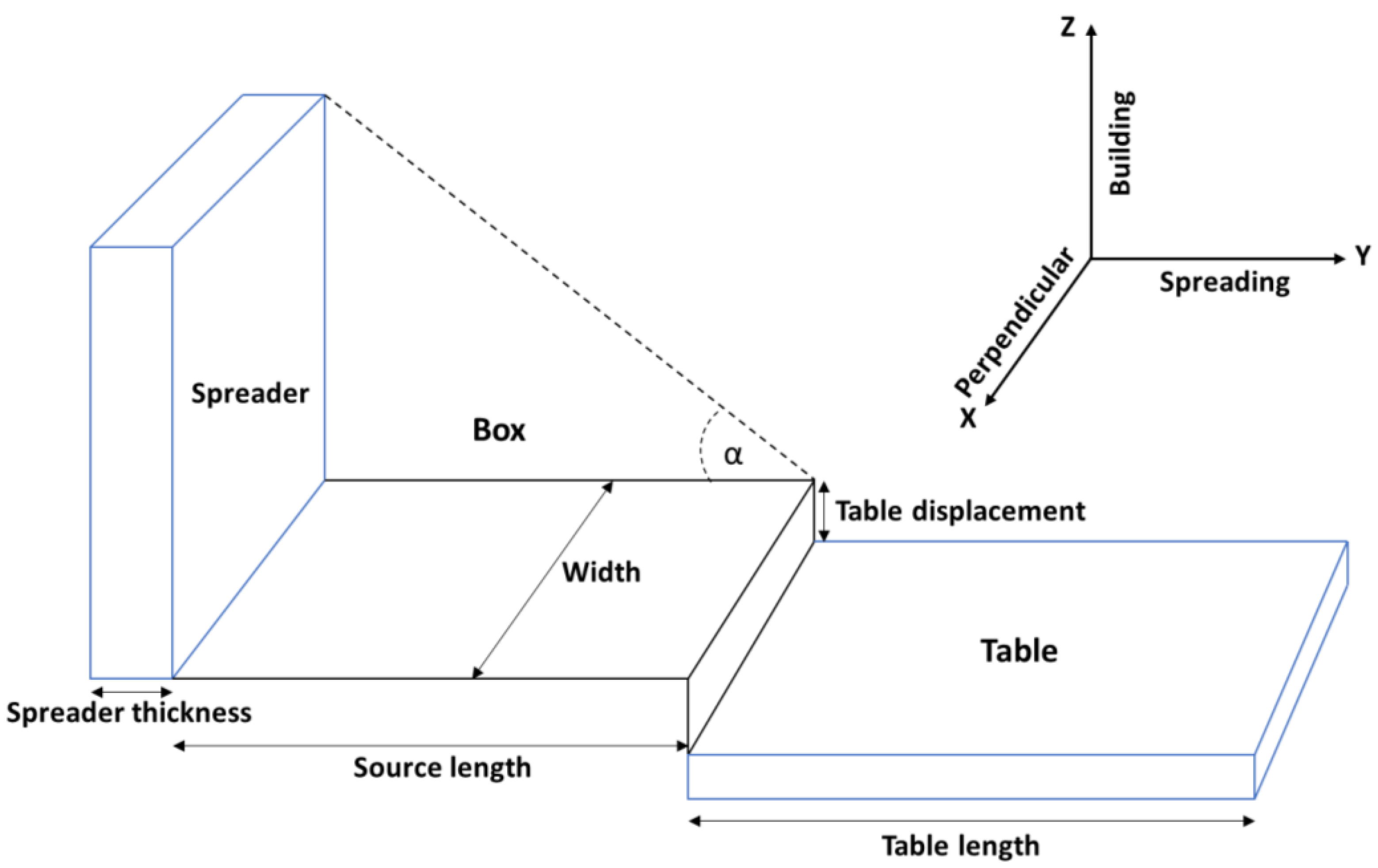

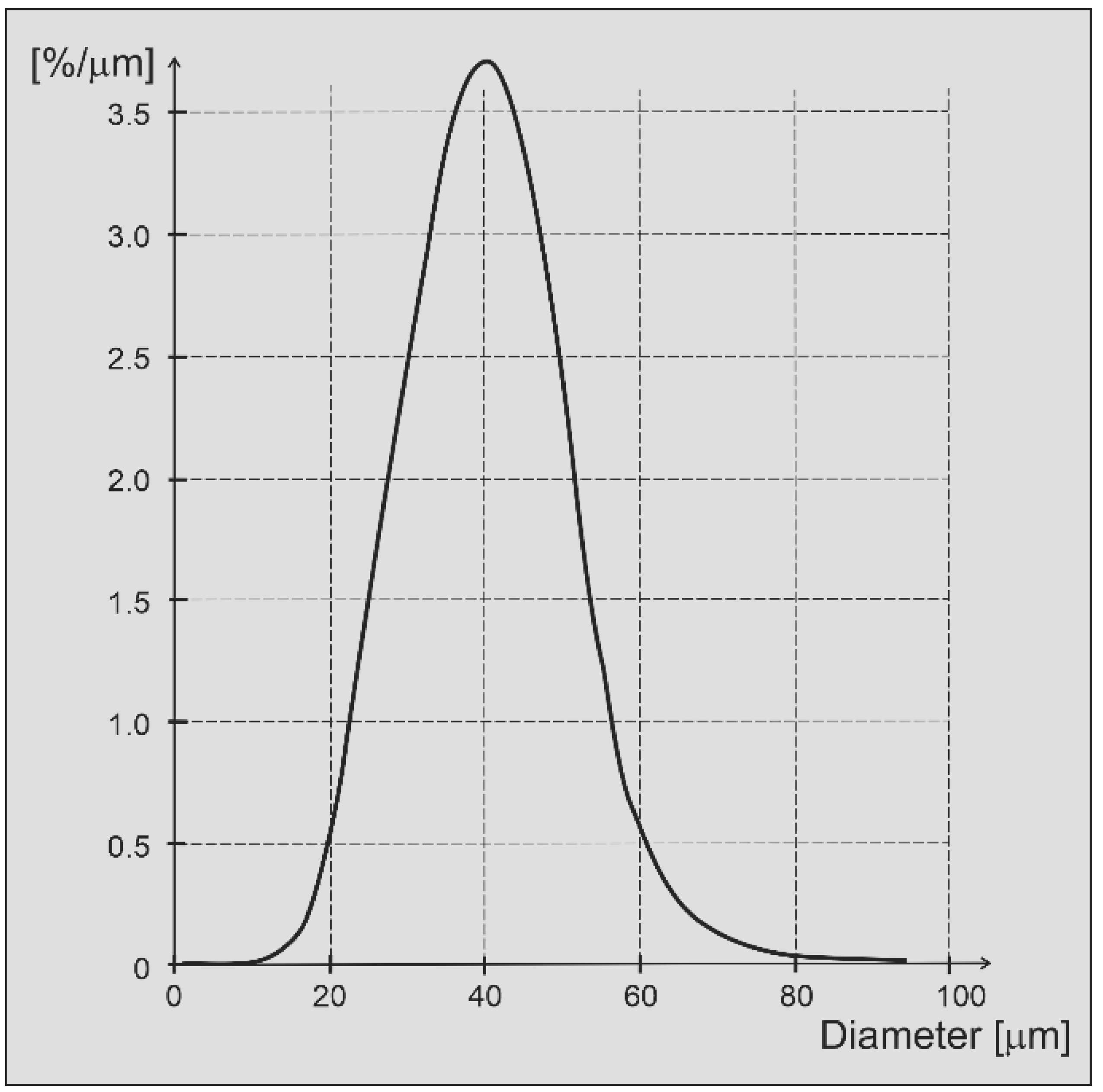

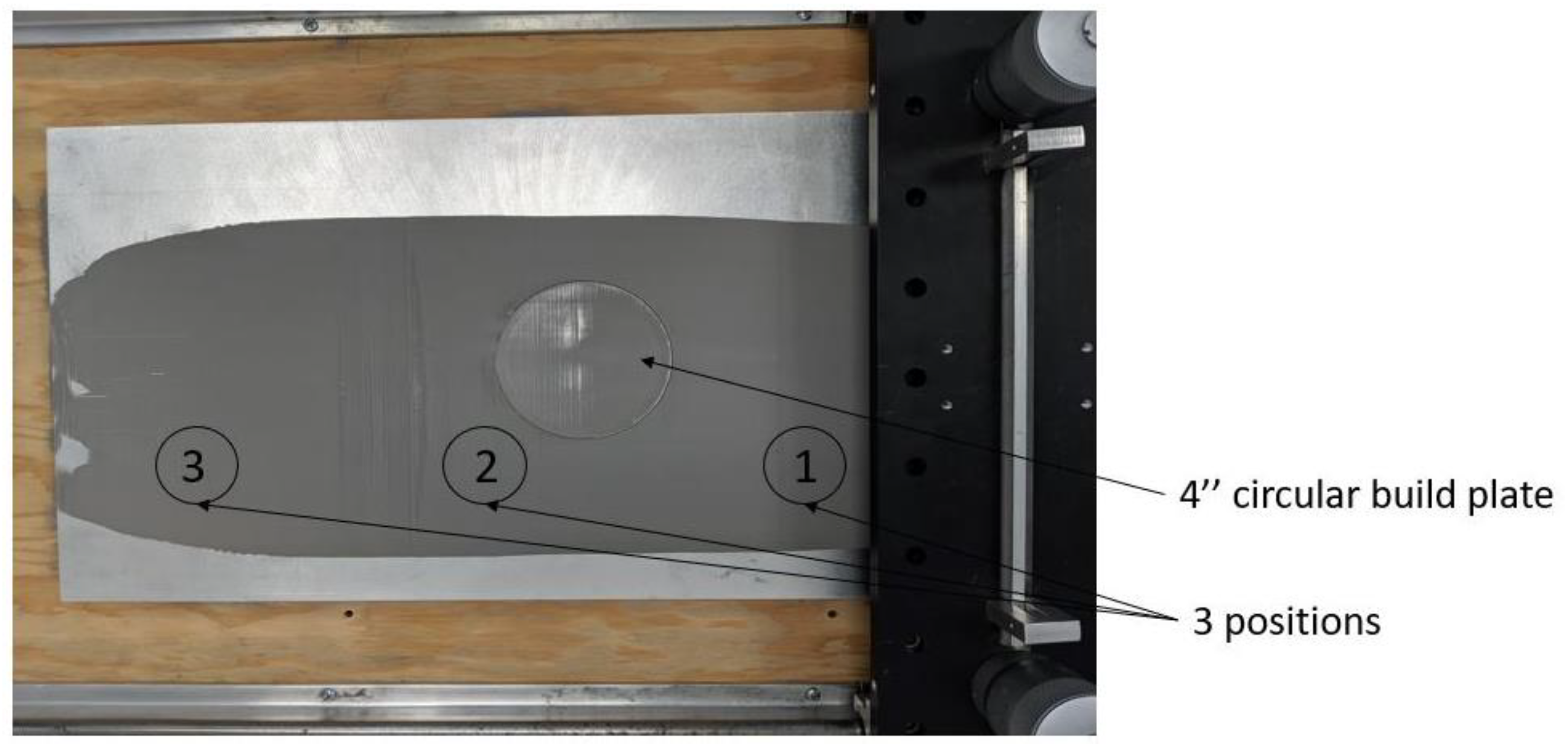
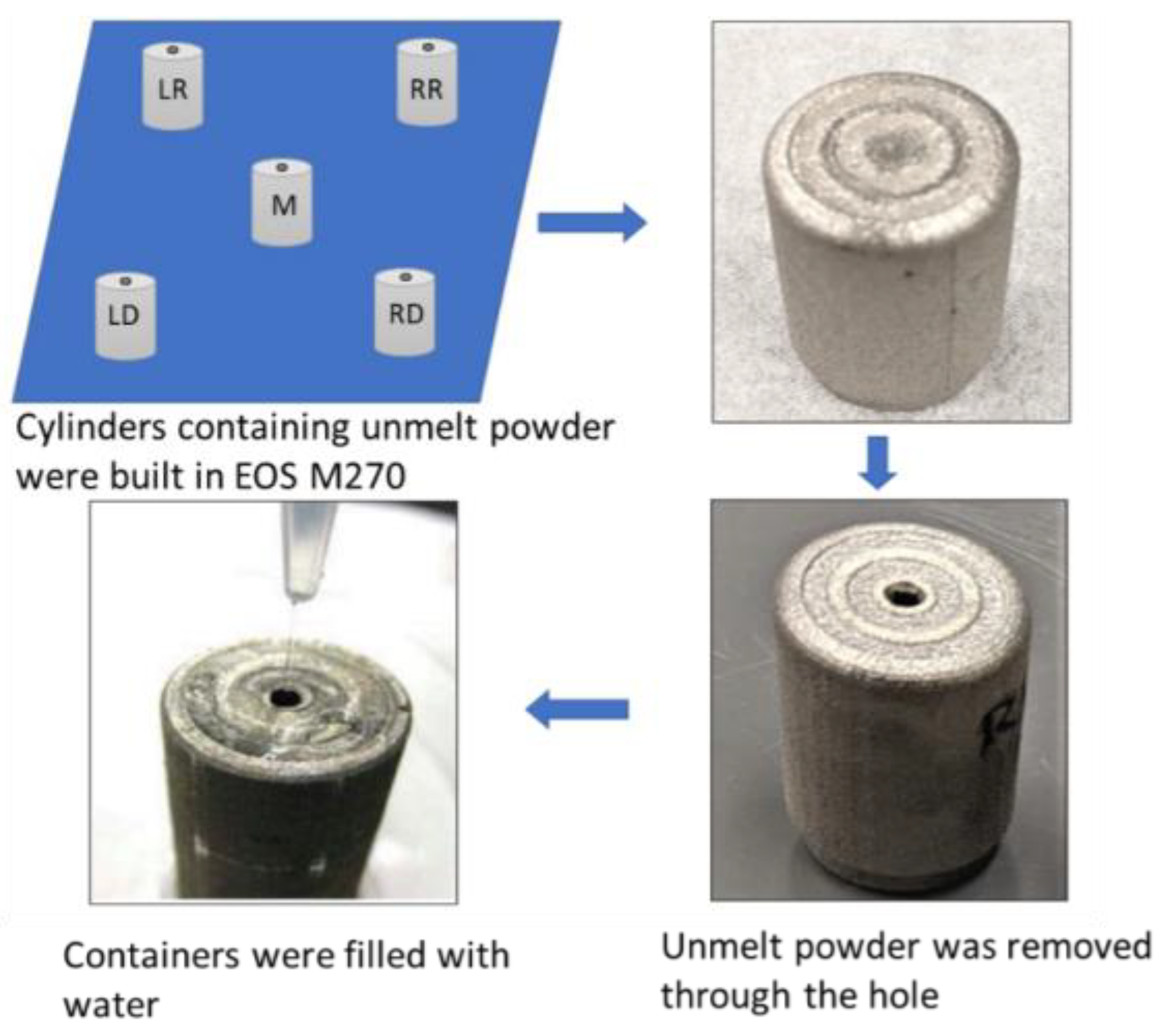
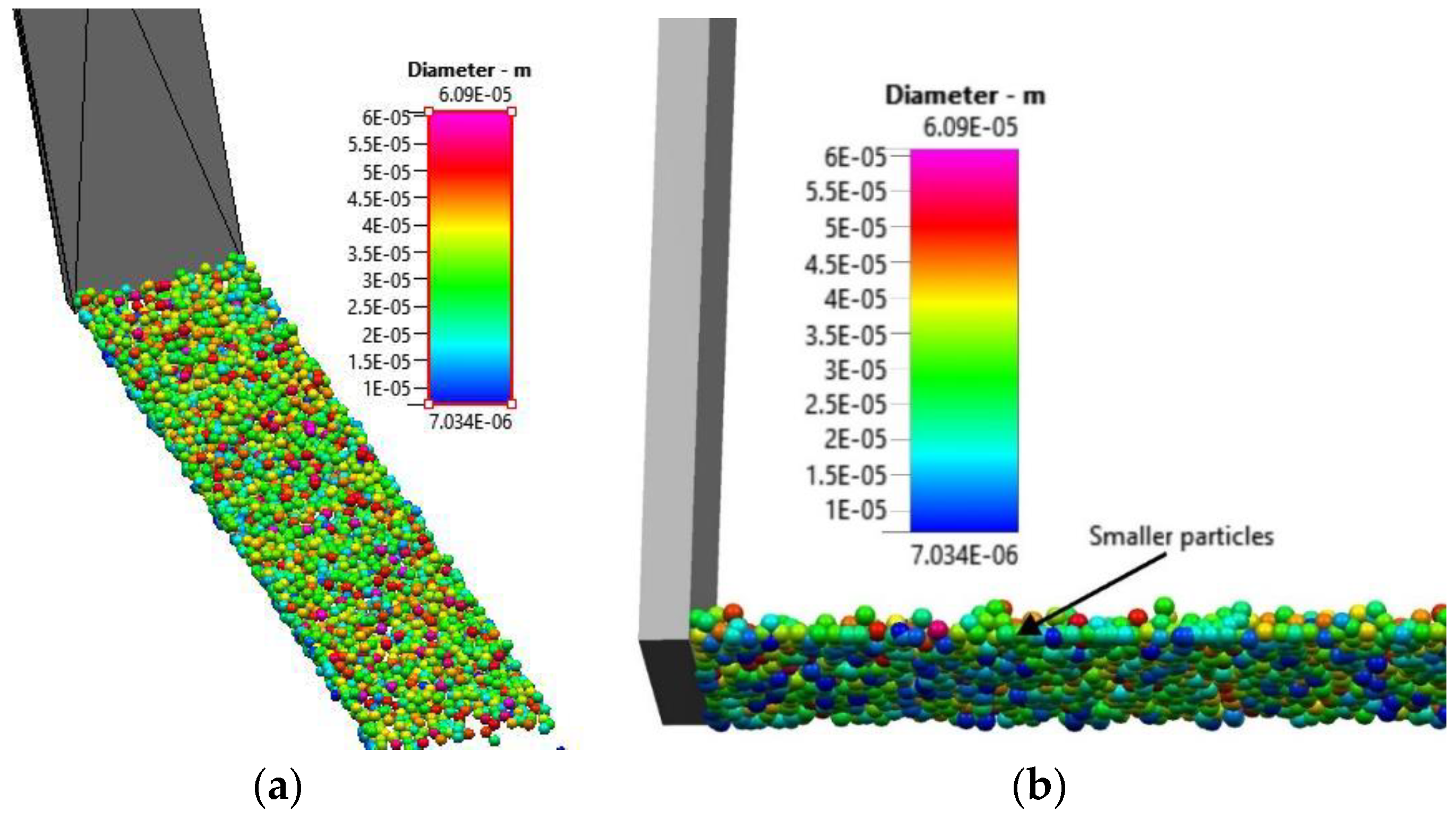
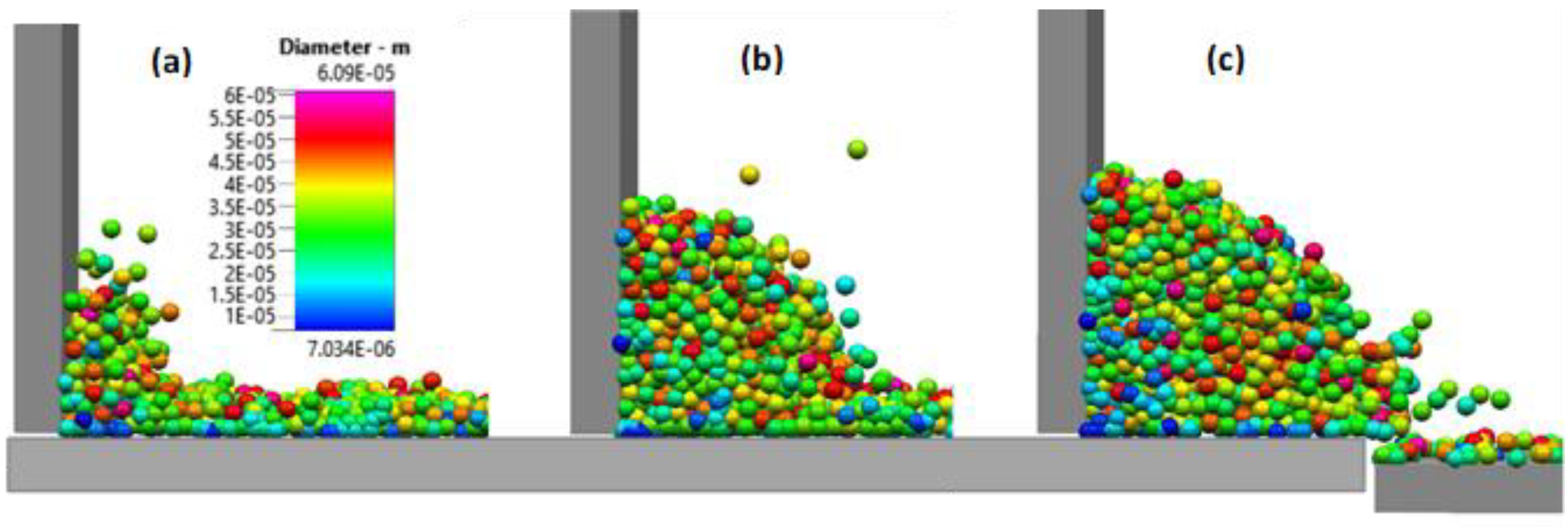

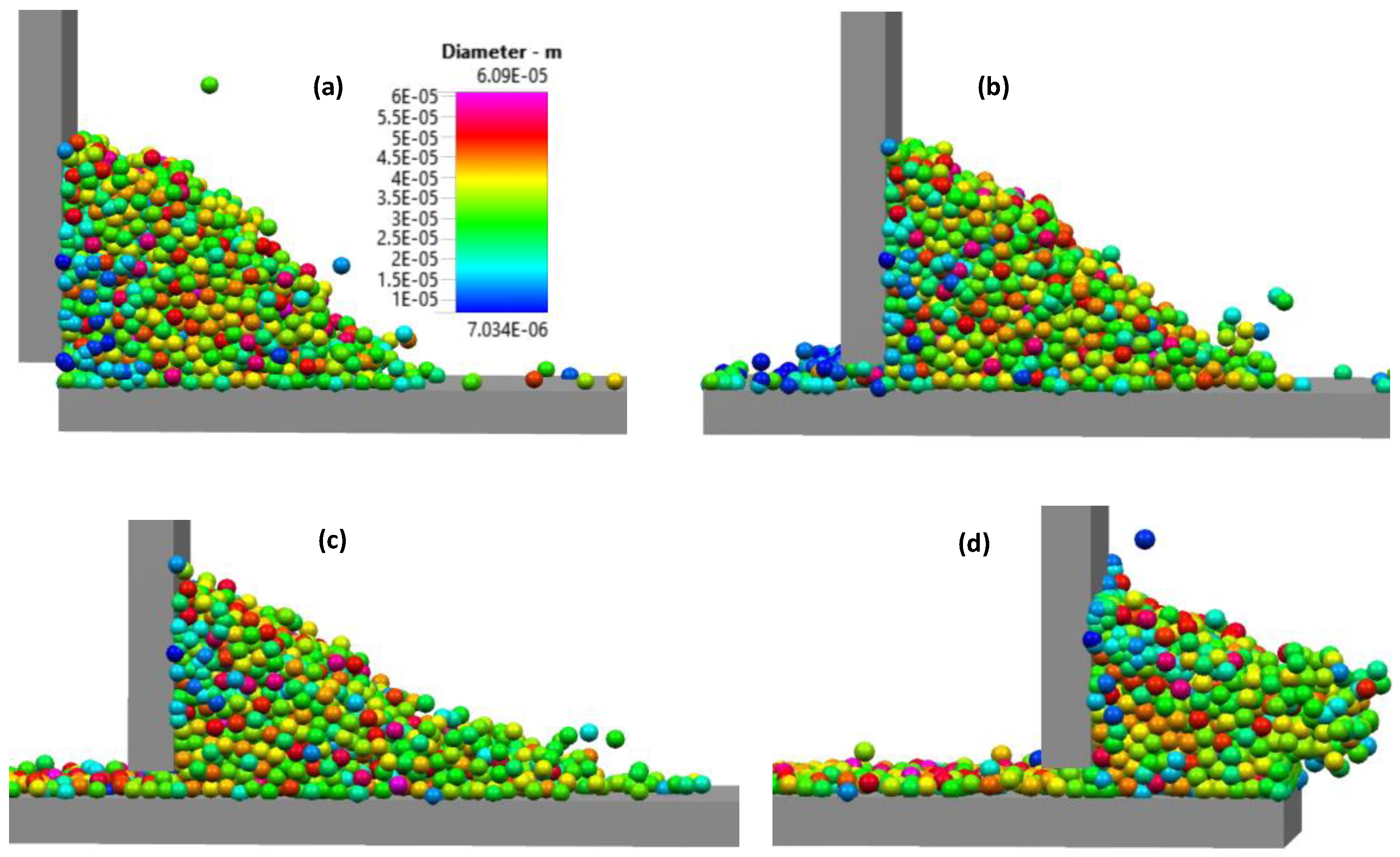
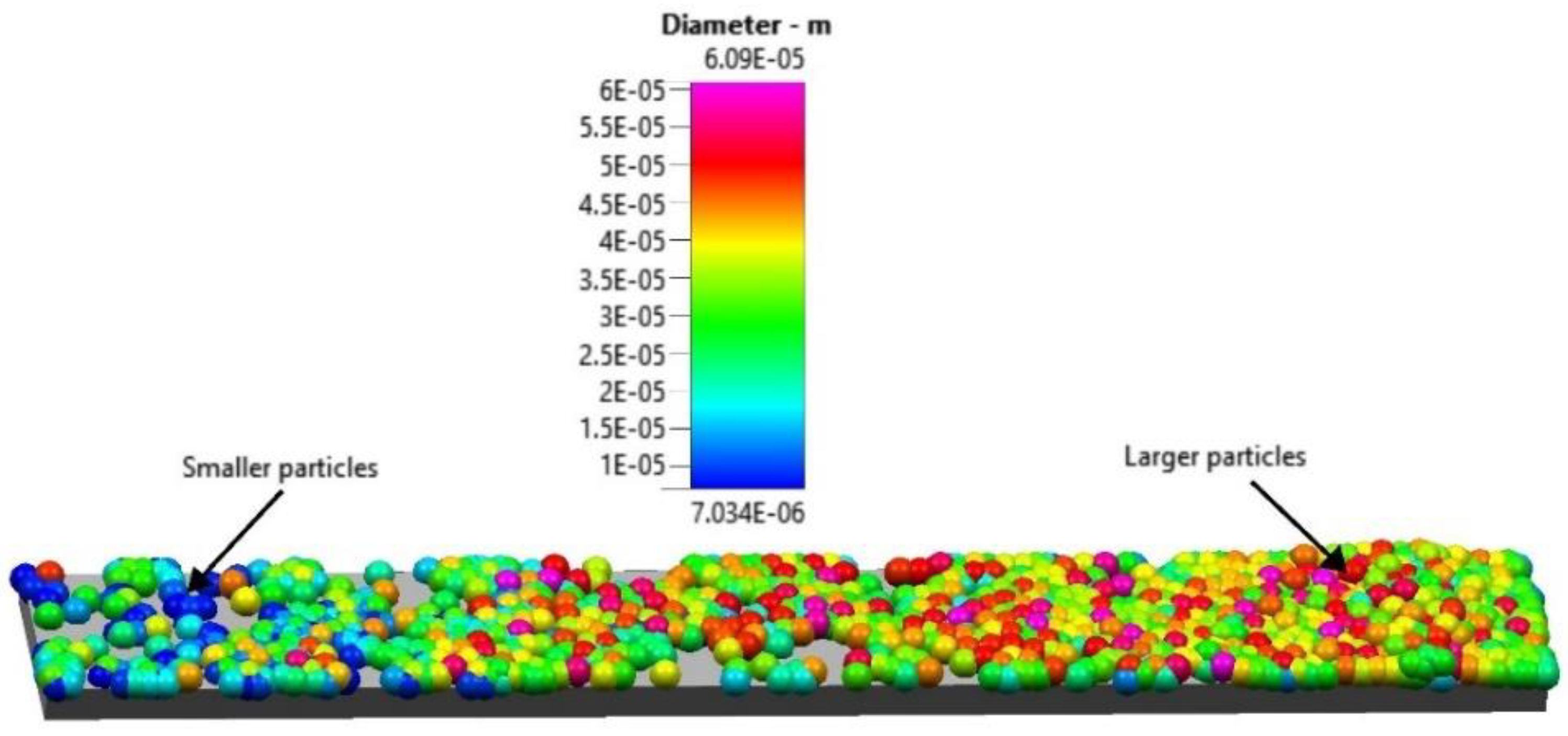

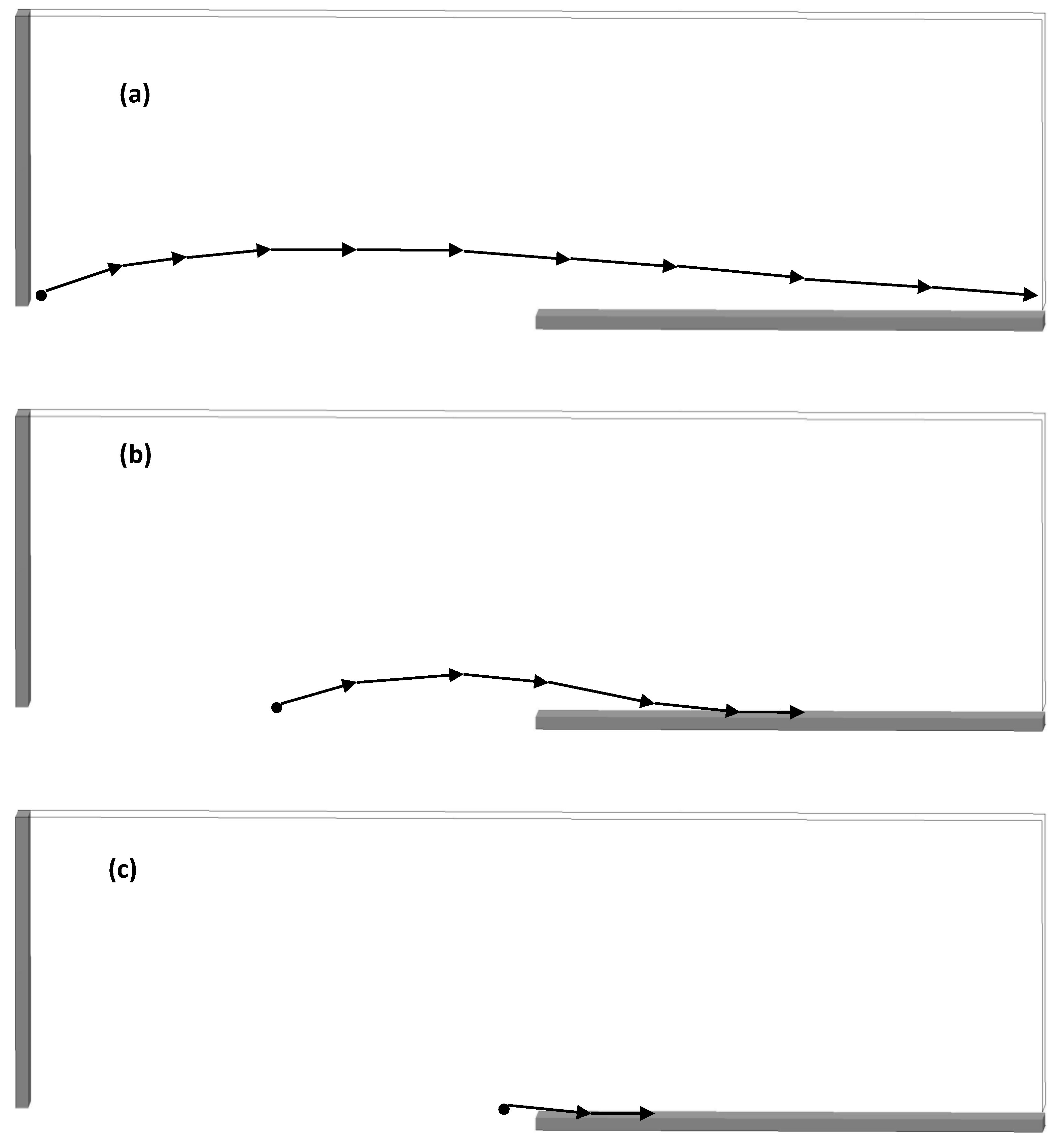
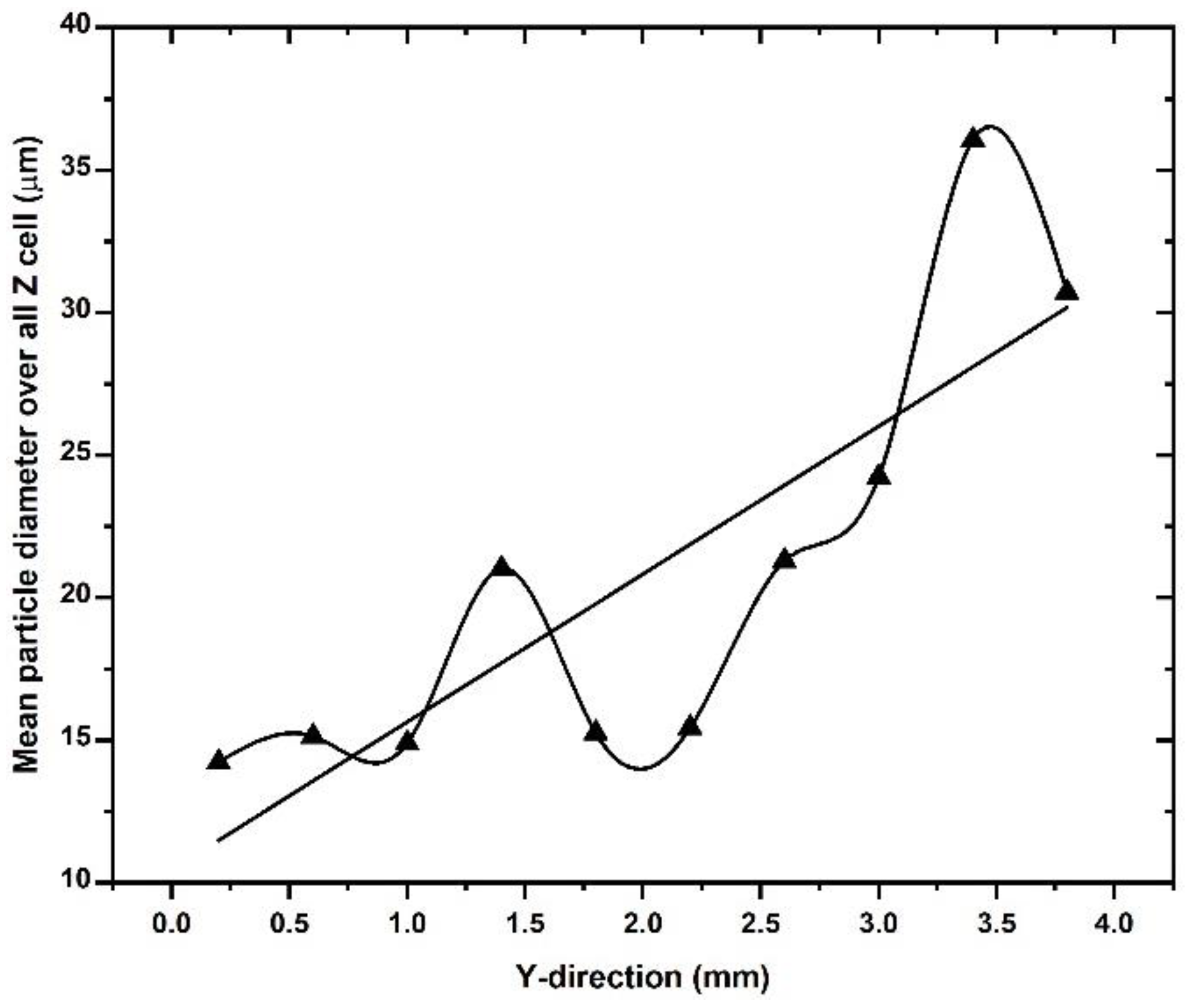
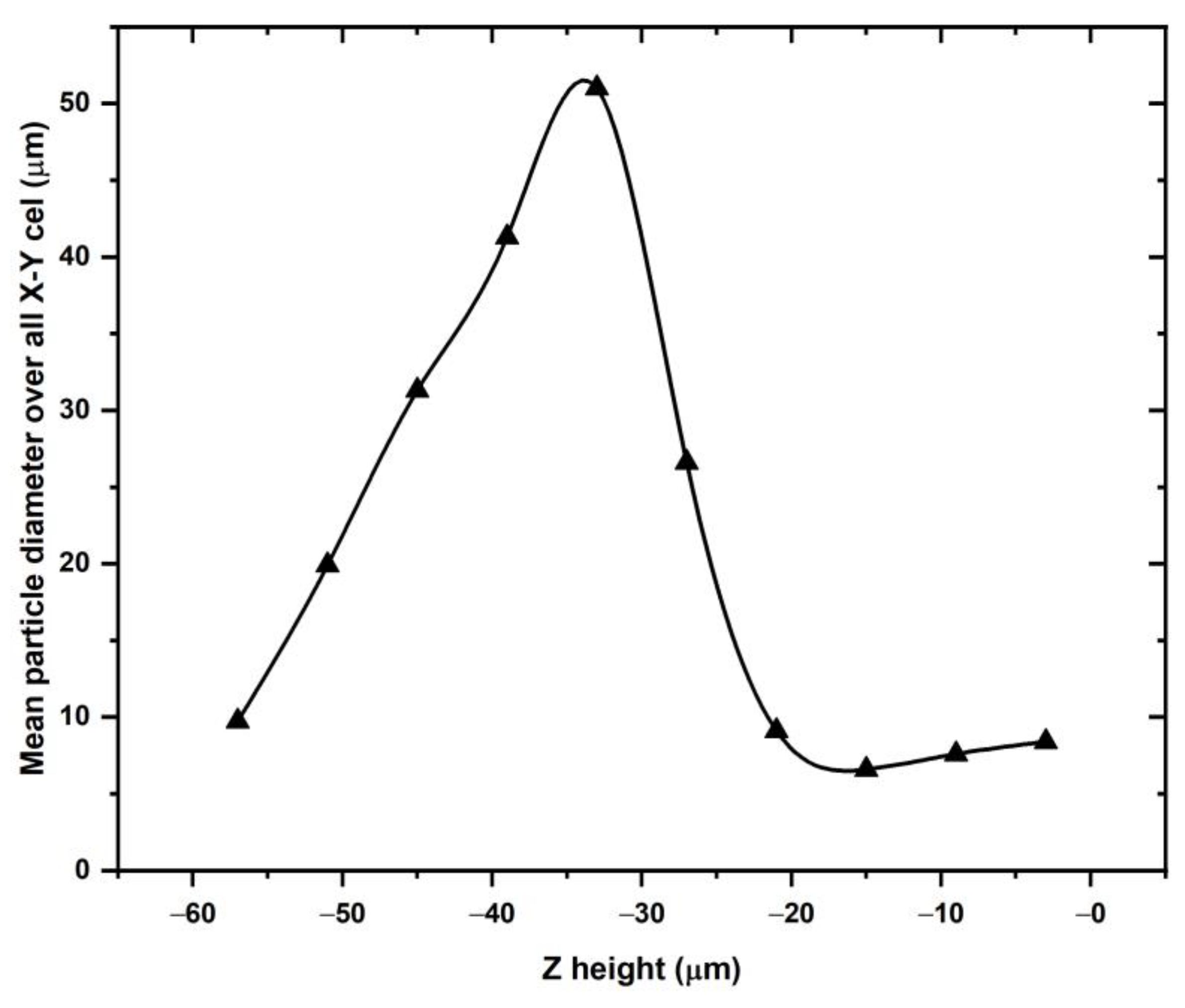
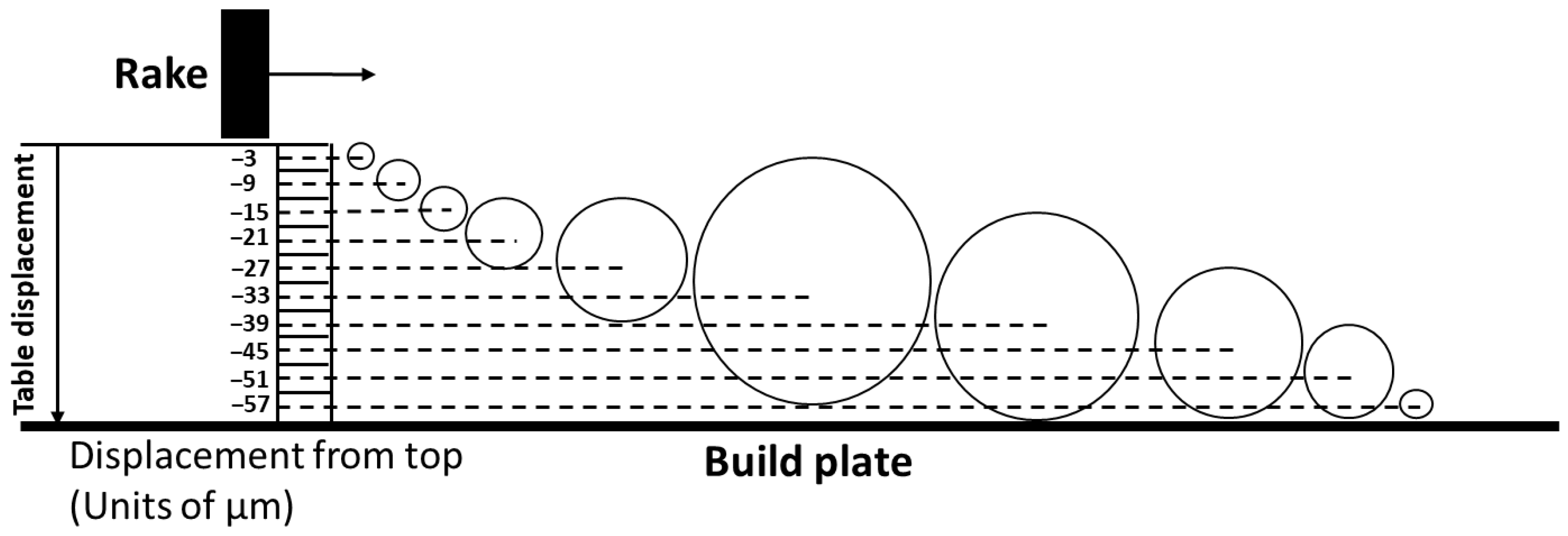


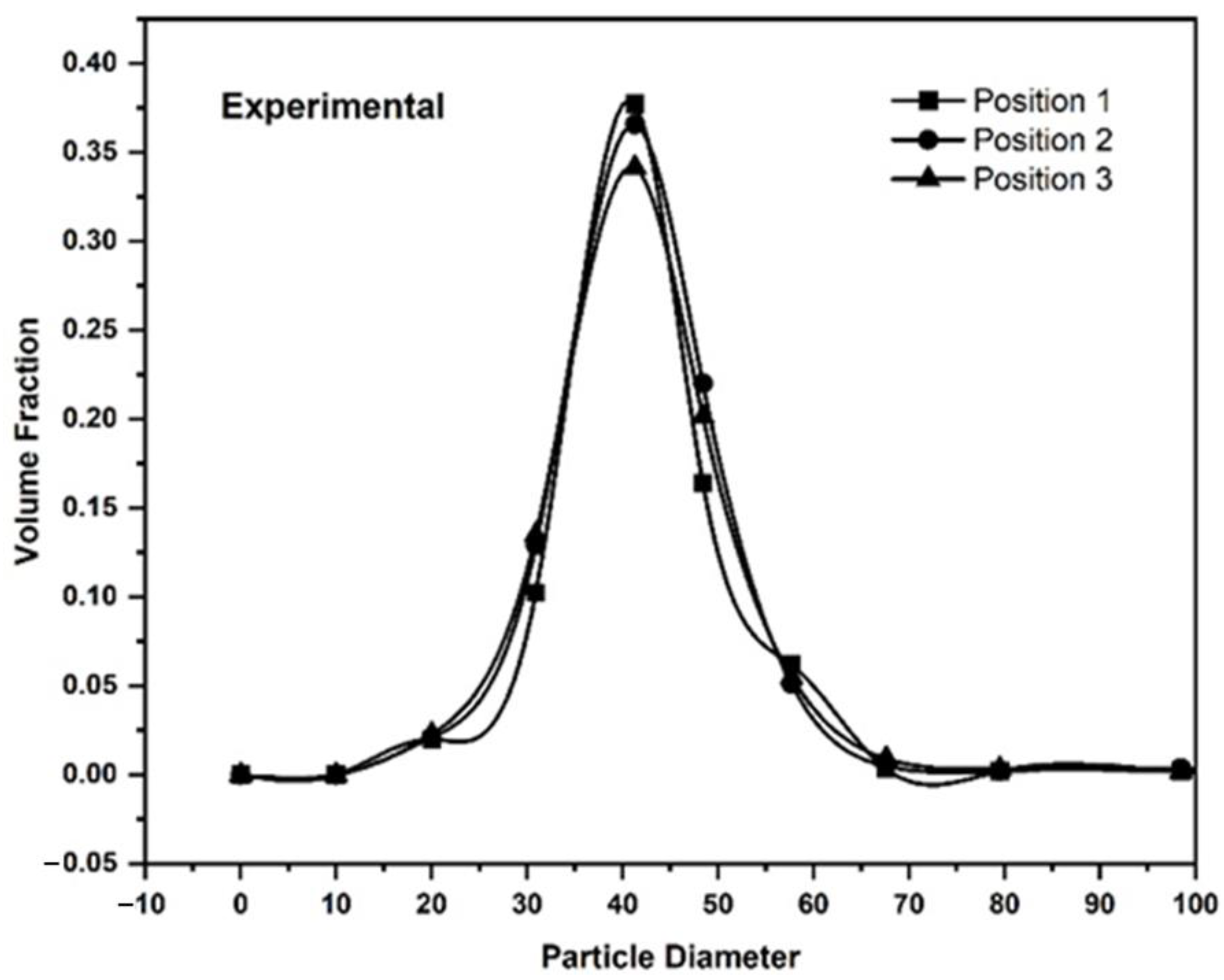
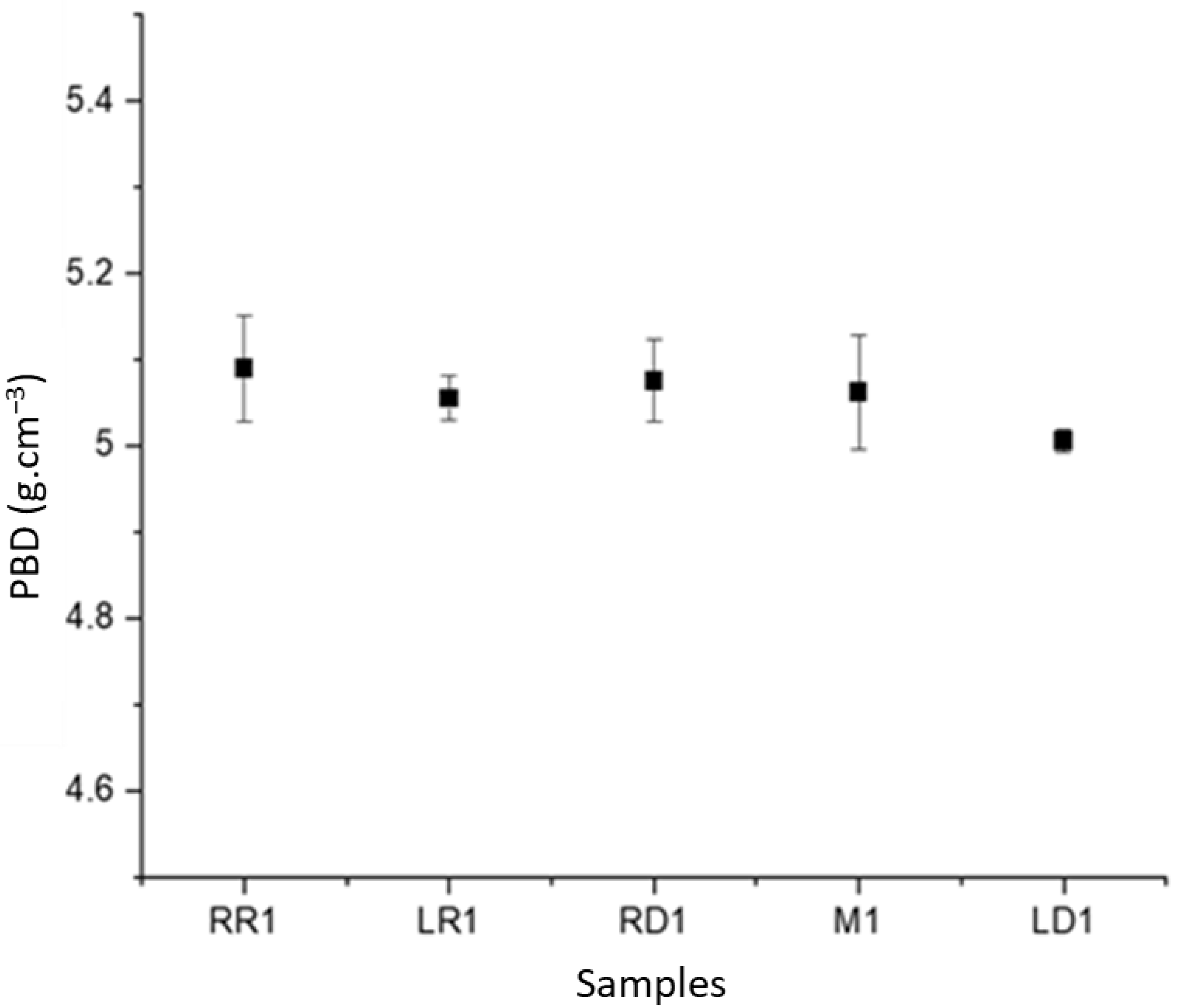

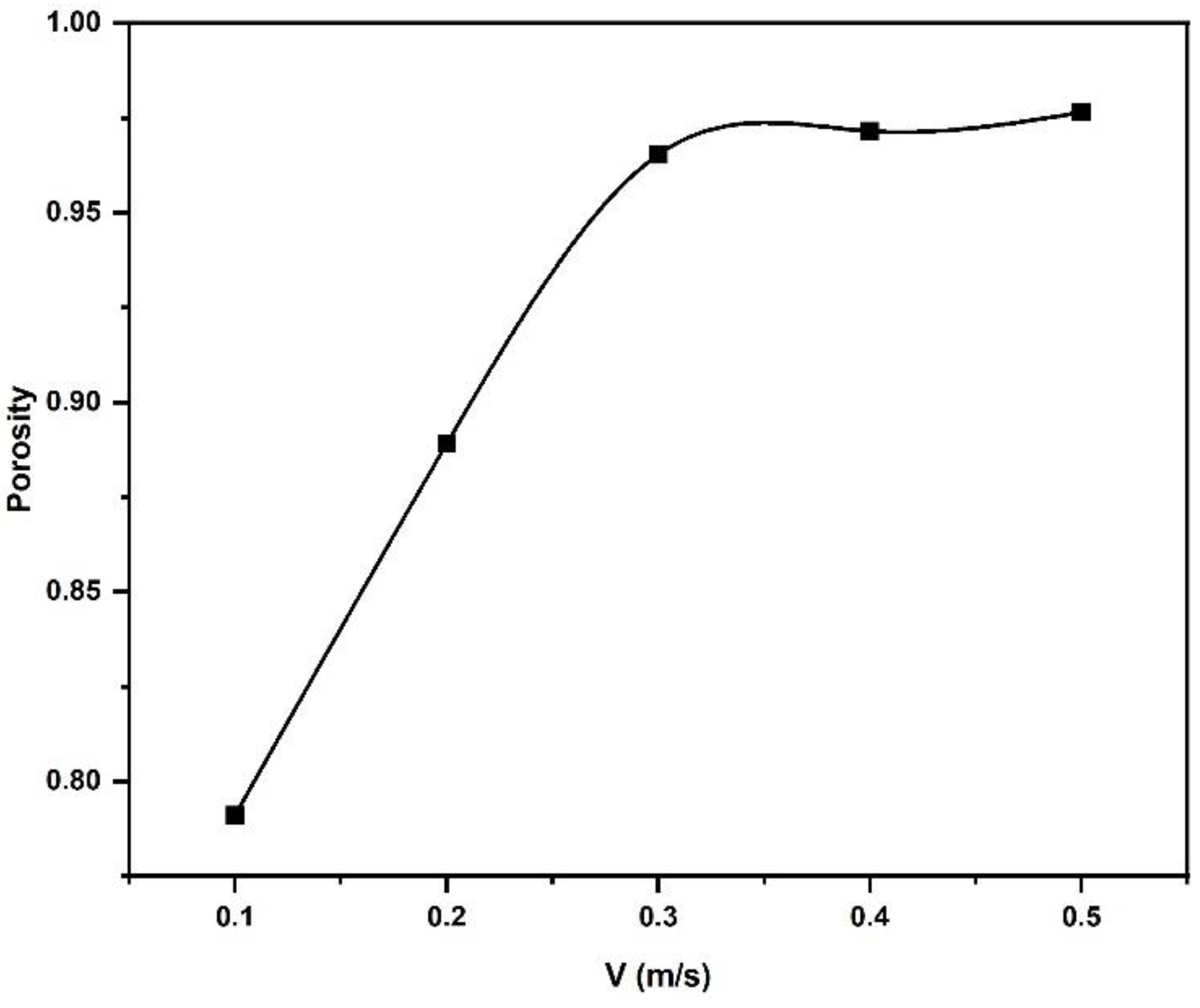
| Input Parameter | Recommended Value |
|---|---|
| Material name | IN718 |
| Solid density (kg/m3) | 8000 |
| Spreader thickness (m) | 10−4 |
| Source length (m) | 4 × 10−3 |
| Table length (m) | 4 × 10−3 |
| Table width (m) | 5 × 10−4 |
| Table displacement (m) | 6 × 10−5 |
| Wall thickness (m) | 1 × 10−4 |
| K-spring coefficient | 0.1 |
| Poisson coefficient | 0.3 |
| Sliding coefficient | 0.1 |
| Rolling coefficient | 0.7 |
| Twisting coefficient | 0.7 |
| Rolling damping coefficient | 1.5 |
| Twisting damping coefficient | 1.5 |
| Dosing | 0.5 |
| Spreader starting time (s) | 2 × 10−3 |
| Spreader velocity (m/s) | 0.1 |
Disclaimer/Publisher’s Note: The statements, opinions and data contained in all publications are solely those of the individual author(s) and contributor(s) and not of MDPI and/or the editor(s). MDPI and/or the editor(s) disclaim responsibility for any injury to people or property resulting from any ideas, methods, instructions or products referred to in the content. |
© 2023 by the authors. Licensee MDPI, Basel, Switzerland. This article is an open access article distributed under the terms and conditions of the Creative Commons Attribution (CC BY) license (https://creativecommons.org/licenses/by/4.0/).
Share and Cite
Habiba, U.; Hebert, R.J. Powder Spreading Mechanism in Laser Powder Bed Fusion Additive Manufacturing: Experiments and Computational Approach Using Discrete Element Method. Materials 2023, 16, 2824. https://doi.org/10.3390/ma16072824
Habiba U, Hebert RJ. Powder Spreading Mechanism in Laser Powder Bed Fusion Additive Manufacturing: Experiments and Computational Approach Using Discrete Element Method. Materials. 2023; 16(7):2824. https://doi.org/10.3390/ma16072824
Chicago/Turabian StyleHabiba, Ummay, and Rainer J. Hebert. 2023. "Powder Spreading Mechanism in Laser Powder Bed Fusion Additive Manufacturing: Experiments and Computational Approach Using Discrete Element Method" Materials 16, no. 7: 2824. https://doi.org/10.3390/ma16072824
APA StyleHabiba, U., & Hebert, R. J. (2023). Powder Spreading Mechanism in Laser Powder Bed Fusion Additive Manufacturing: Experiments and Computational Approach Using Discrete Element Method. Materials, 16(7), 2824. https://doi.org/10.3390/ma16072824







